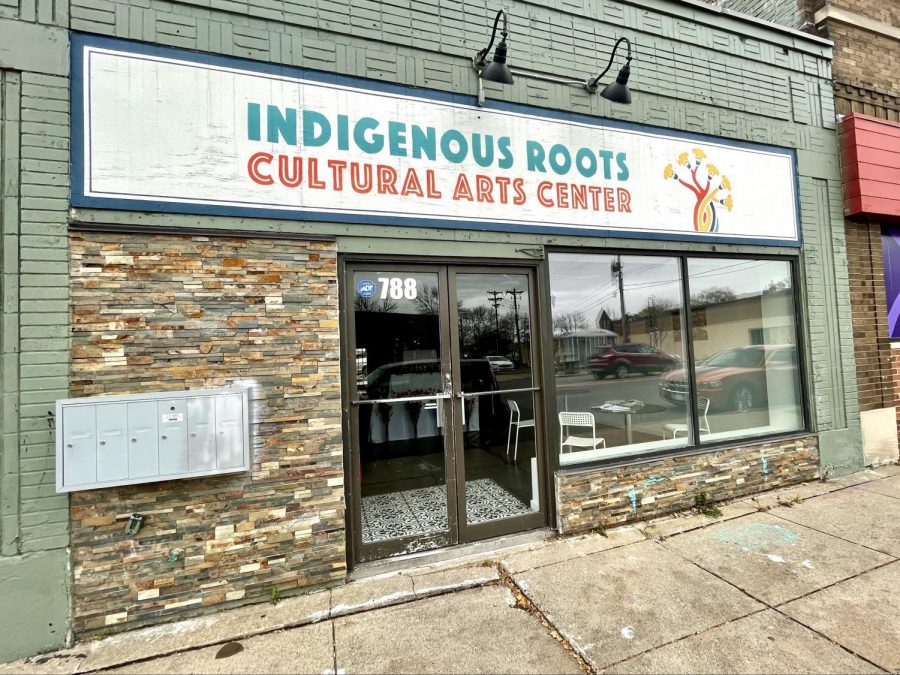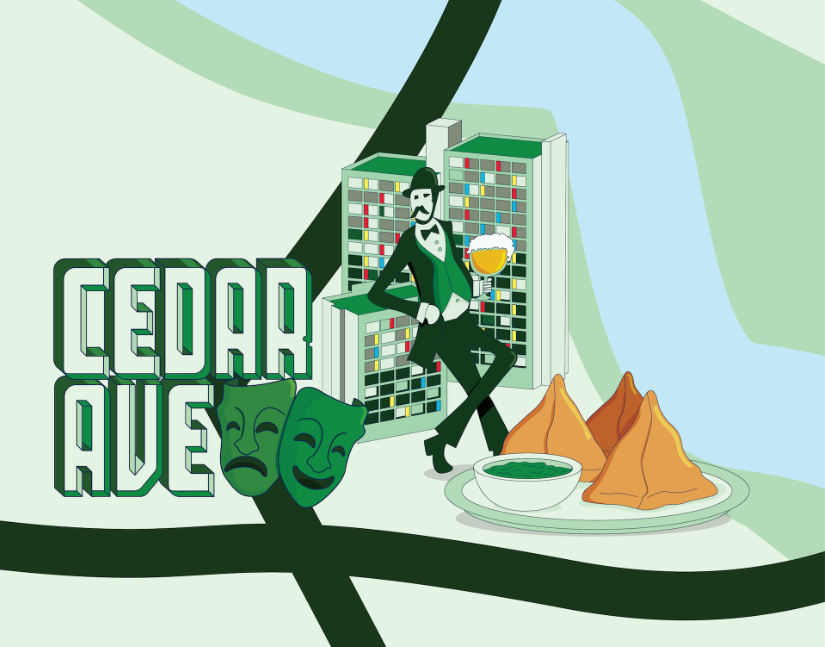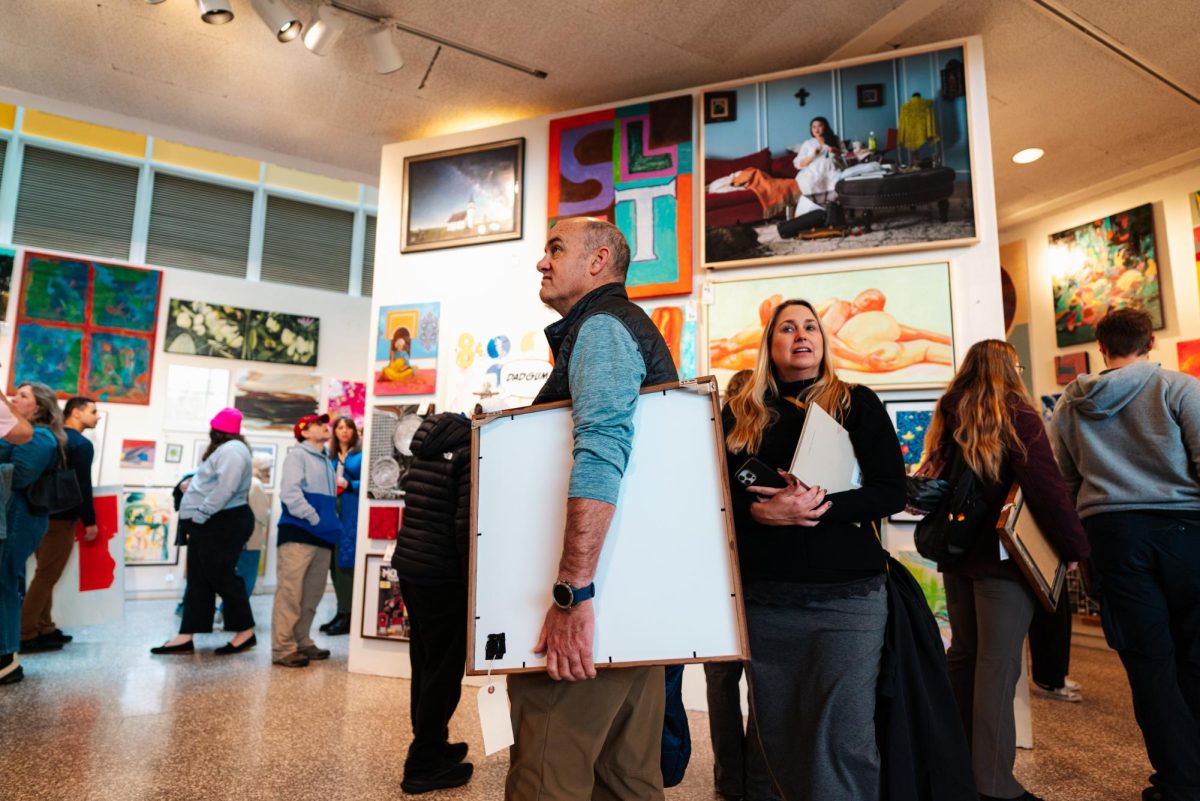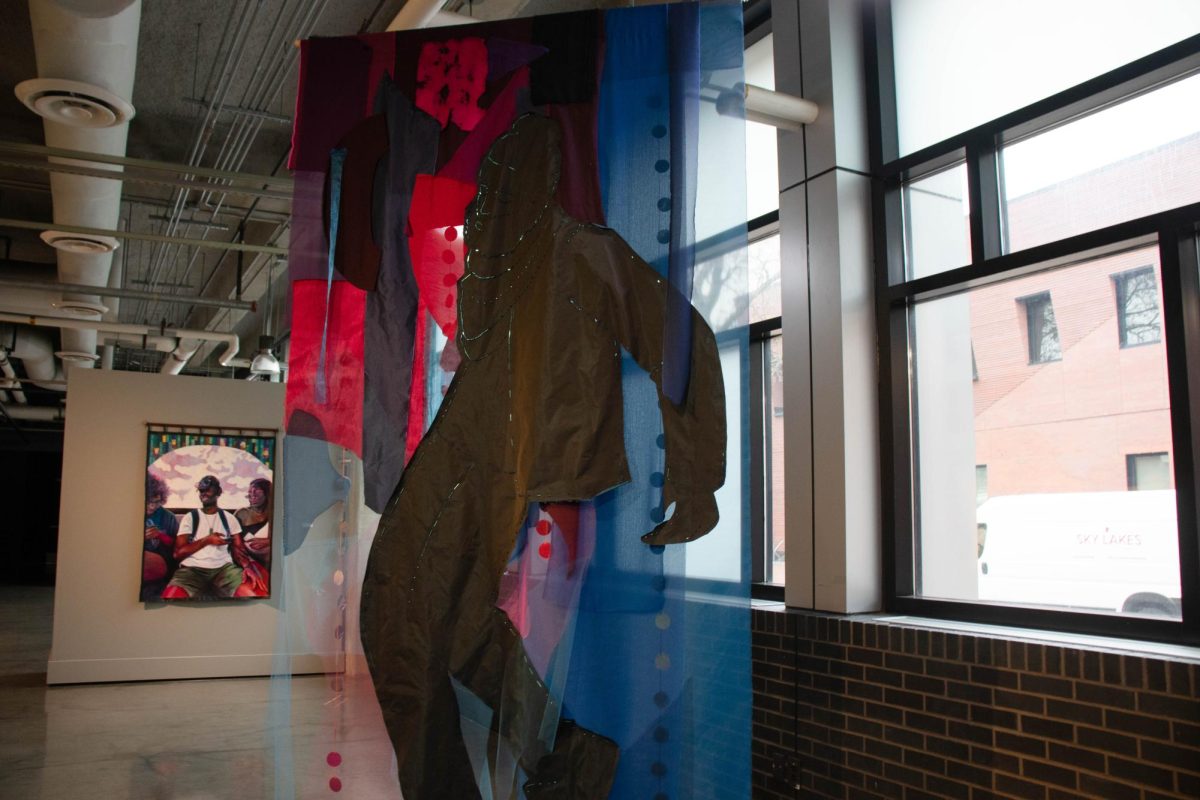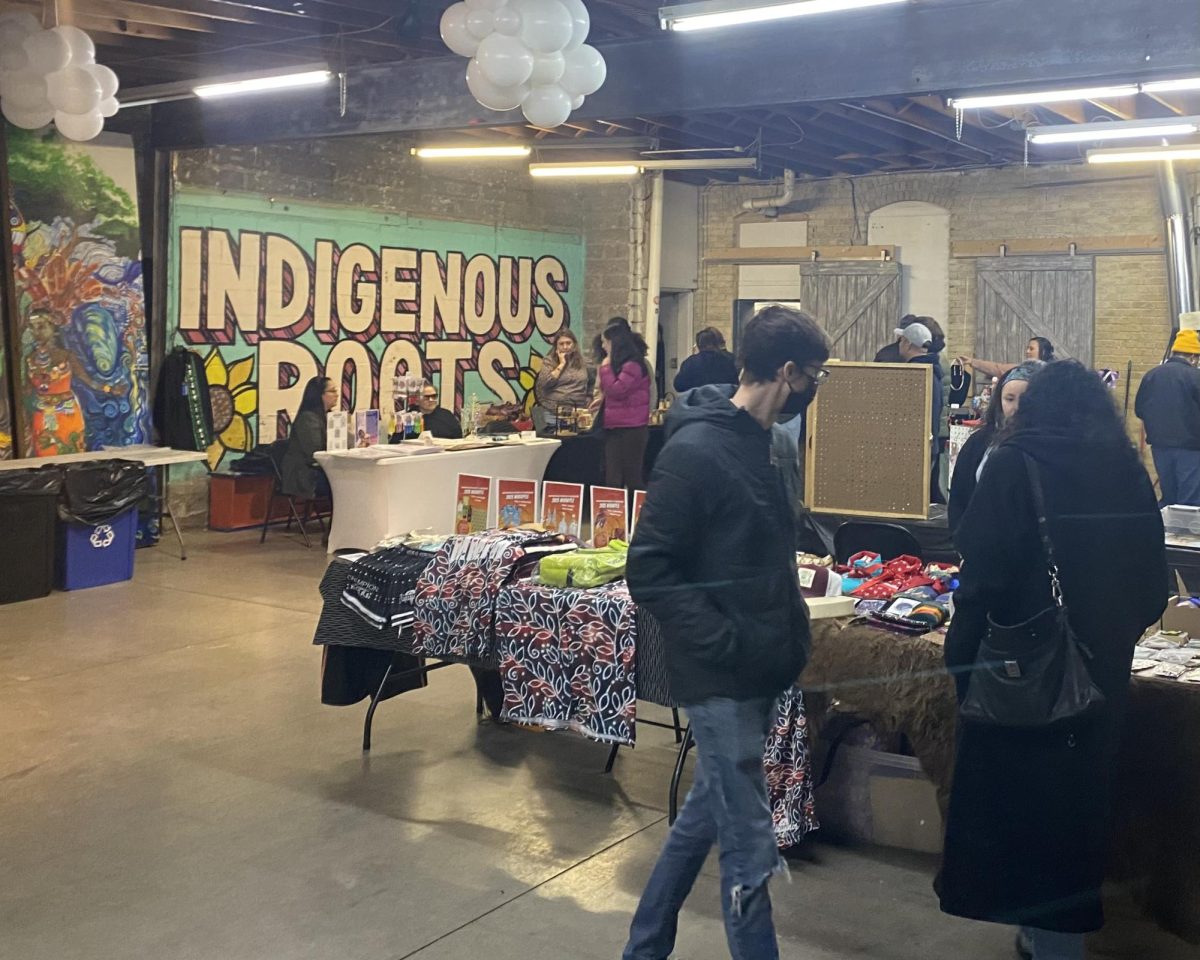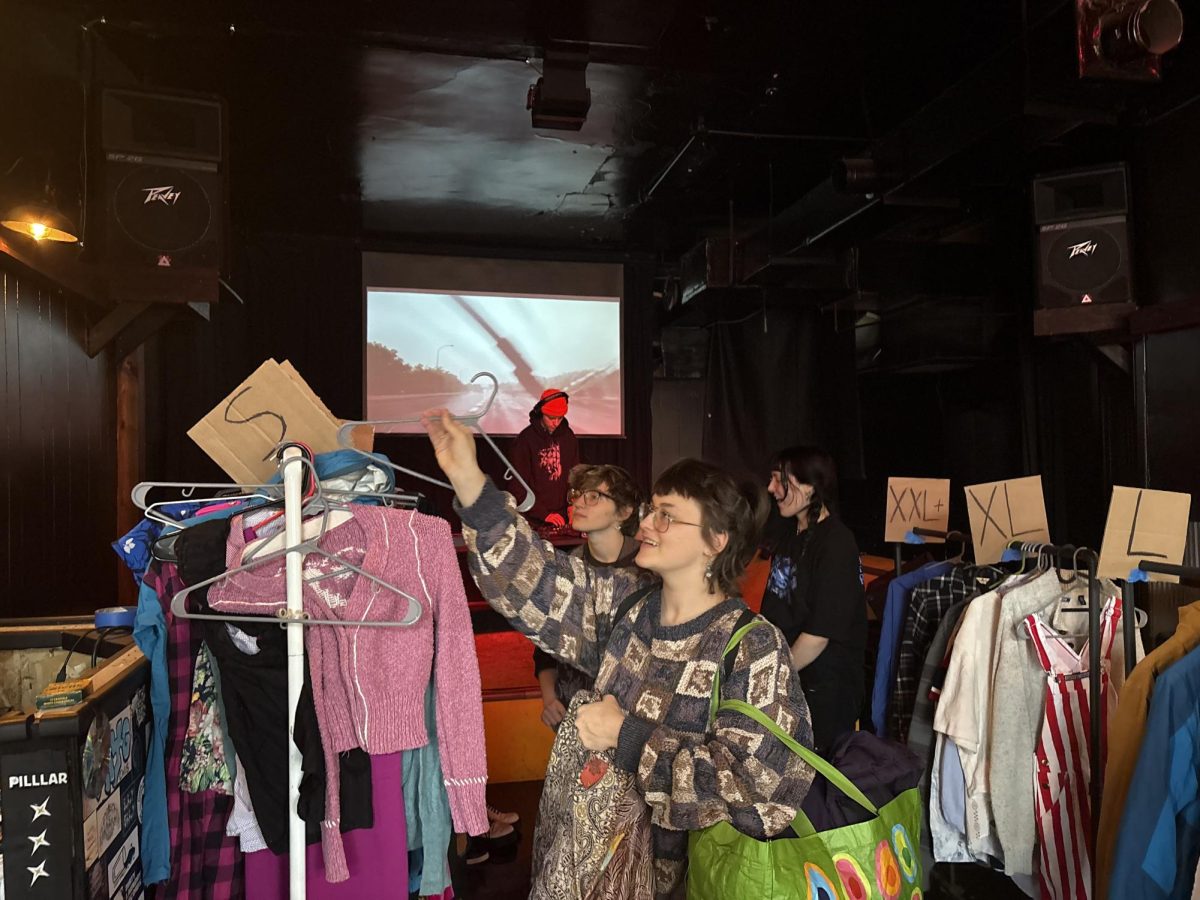In May 2021, the Tk’emlúps te Secwépemc First Nation reported finding the remains of 215 children buried at the former Kamloops Indian Residential School in Canada.
For many, this discovery came as a shock. For members of the Indigenous community, the truth of what occurred at these residential schools has always been known, according to Maria McCoy, member of the Turtle Mountain Band of Chippewa and family empowerment coach at the American Indian Family Center.
Indigenous Roots’ current exhibit, “215+,” began with a desire to honor the children of the Kamloops Indian Residential School and a dream. Co-founder of Indigenous Roots Mary Anne Quiroz dreamt she was visited by the 215 children and told she was to help coordinate a project in their honor, according to McCoy. Alongside these children was a gray-haired grandmother meant to help with the project — McCoy. Quiroz reached out following her dream, and McCoy stepped into her role in bringing the exhibit to life as one of dozens of doll-makers. The result is a memorial exhibit that runs until Nov. 30 at the Indigenous Roots Cultural Arts Center.
The spirit medicine dolls on display represent the spirits of each of the Indigenous children whose unidentified remains were discovered, according to McCoy. From the sacred materials used to mold their exteriors to the traditional medicines contained within them, every bit of the dolls’ handcrafted construction was intentional. Many are adorned in orange, the color associated with remembrance and acknowledgement of the residential school system in Canada.
The exhibits’ curators include Maria McCoy, Abril Macias, the Quiroz family, the Torres family, members of the International Indigenous Youth Council-Twin Cities, Kalpulli Yaocenoxtli and Indigenous Roots.
While some of the dolls have faces, many are faceless. This design choice was made at the discretion of the doll-makers. According to McCoy, many of the doll-makers, herself included, had incredibly intimate experiences with the dolls as they made them in which they were able to communicate with the spirits of those whom they represented. It was in these interactions that the stories of the dolls came to life — stories shared in detail in a space dedicated to letters of reflection at the exhibit.
“They tried to bury us. They didn’t know we were seeds,” reads the message on posters featured at the exhibit, created by Samuel Torres, member of the Mexica-Nahua community and Director of Research and Programs at The National Native American Boarding School Healing Coalition, and his partner. The message alludes to the community’s refusal to be dismissed by forces that have long tried to invalidate their existence, attempting to erase the realities of their culture through colonization and the forced assimilation practices of residential schools.
Dozens of community members were involved in the process of making dolls and contributing to the exhibit. Macias, a teacher at the American Indian Magnet School and member of Indigenous Roots, served a fundamental role in pulling the exhibit together. They assisted heavily in the creation of the dolls, ceremonies meant to honor the children and in the construction of the exhibit itself.
“There have been a string of experiences that have been leading through to this in so many beautiful ways,” Macias said of the exhibit and their involvement. They described their opportunities for involvement as a “gift.”
Macia, McCoy and Torres hope to see people walk away from the exhibit having learned something, utilized the dolls as a method of healing or having gained a newfound sense of validation. At its core, the aim of the exhibit is to promote healing within the community.
“We’re all here collectively as ancestors of those ancestors that experienced severe trauma and we carry the resiliency, the gifts and the knowledge that they carried for us,” McCoy said. “It’s in us, and we can carry it forward and give it to the next generation. Whatever we do in this lifetime to heal, we can use it to help the new ancestors not to have to carry that burden.”
While the future of the exhibit is unknown, its co-curators hope to see it move beyond the walls of Indigenous Roots.
“We’ll let the dolls figure out where they’ll go,” Torres said. Given a renewed social and political interest alongside the government’s acknowledgement of residential schools as a time in history, Torres believes people are beginning to realize the necessity of these conversations.
“A couple of years ago, many of the folks who made spirit dolls were not in a place to have this conversation,” Torres said. “Now, we’re in a new place.”
What: Honoring Indigenous Children 215+
When: Nov. 2 through Nov. 30, Tuesdays & Thursdays 5:00-8:00 p.m., Wed. 2:30-4:30 p.m., Saturdays 12:00-2:00 p.m. Where: 788 E. Seventh St., Saint Paul, MN 55106
Cost: Free


